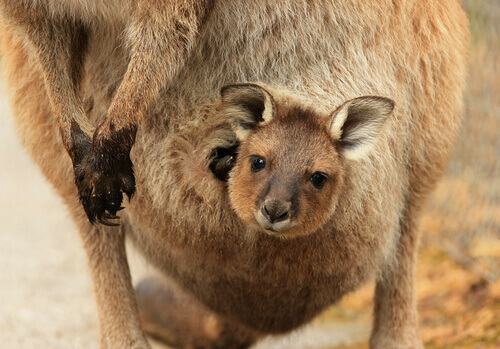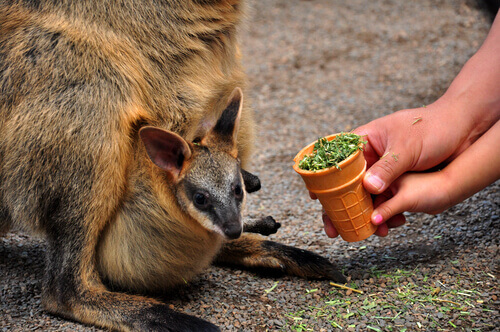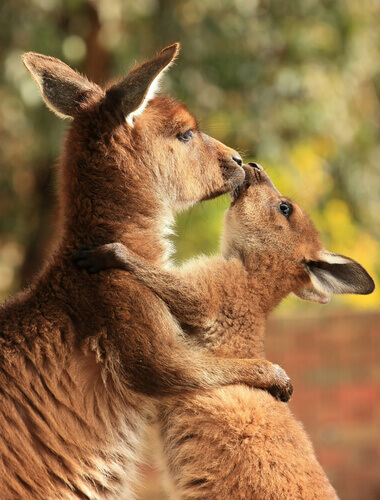The Impressive Maternal Instinct of the Kangaroo

The maternal instinct is usually considered a gift of life. However, some animals take it one step further. Probably everyone who sees a baby kangaroo (joey) in their mommy’s pouch thinks that it’s adorable. Well, today, we want to talk to you about the maternal instinct of the kangaroo, which sets it apart from the rest of the animals.
Why is the maternal instinct of the kangaroo special?
You’re probably already very familiar with the reproduction of many mammals on Earth. Usually, when babies are born, the mother breastfeeds them and, after a few days, pushes them with her snout so that they can walk on their own.
This is the cycle of life. Even though this may surprise you because a human baby depends on its mother for much longer, this is what usually occurs in the animal world. Nevertheless, one animal sets itself apart from this: the kangaroo.
A baby kangaroo can spend about 250 days in its mother’s pouch. The mother kangaroo enjoys it, as she helps her joeys develop every day. Of course, this happens for a reason, and that’s because kangaroos’ fetal development differs greatly from other animals.
How the kangaroo fetus develops
Unlike other mammals, the baby kangaroo doesn’t develop in the mother’s womb. It leaves it after 33 days and finishes growing in the mother’s marsupial or pouch.

The pouch or marsupial is a fold of skin that covers the breasts of the kangaroo mother. When 33 days have passed, the baby kangaroo descends into the vagina and comes out to position itself in the pouch. When a baby kangaroo is born, it measures no more than an inch, and weighs about 800 milligrams.
Once in the pouch, it tries to reach one of the breasts to feed. Joeys stay in the pouch from five to eight months, depending on the kangaroo species. The baby kangaroo is the one who decides to go out to the outside world or not.
Even if it decides to go outside, that doesn’t mean that it has to fend for itself, because it can return to its mother’s pouch whenever it wants until the weaning period ends. This usually happens after four to six months.
Interesting facts about kangaroo reproduction
An interesting fact is that, once the joey is born, the mother is fully prepared to be impregnated again. In fact, a new joey could be born 24 hours after the first one completely leaves the pouch.

It’s common to see baby kangaroos sharing their mother’s breasts. However, it isn’t normal for two joeys to be in the pouch at the same time. There have been rare cases of twin births.
Interestingly, the mother’s breasts have the ability to secrete two different types of milk. The newborn joey’s nursing needs won’t be the same as those of a baby kangaroo that’s already left the pouch.
Therefore, each breast will have a different composition, depending on the joey that’s nursing from it. Who can contradict the wisdom of nature?
It’s known that kangaroos can have three joeys at the same time: one outside the pouch, one inside nursing, and another in embryo form, waiting to be gestated.
As you’ve seen, the maternal instinct of the kangaroo is quite impressive. The mother is willing to carry her own weight after giving birth and to carry her joeys for a year on average, while protecting, nursing, and caring for them.